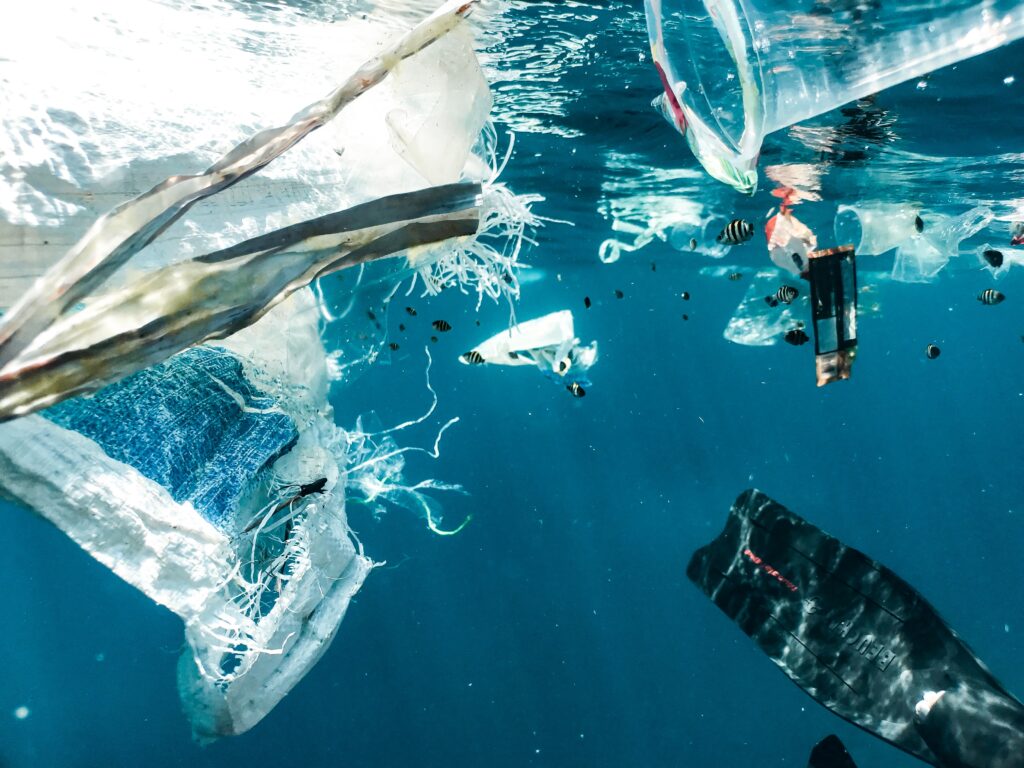Humans have been inventing for more than 2 million years, since we first developed stone tools, and we haven’t stopped since. Globally, 3.3 million patents were filed in 2020 alone, an increase of 1.6% from 2019. As our technology capabilities increase, so does our ability to create new solutions. But what if some of those solutions lead to even more problems? We explore some of the most destructive inventions that changed the world and uncover how environmentally damaging they really are.

1. Cigarettes
The first on our list of destructive inventions that changed the world are cigarettes. Tobacco comes from the leaves of the genus Nicotiana, part of the night-shade family. It’s native to North and South America, with the earliest known use dating back to the Mayan people in the first century BC. Europeans first discovered tobacco in the 1500s and by the second half of the 1800s the first cigarette machines were developed. These early machines produced about 200 cigarettes per minute, compared to today’s that produce about 9,000 per minute.
Destructive Statistics
- 8 million deaths per year
- 84 million tonnes of CO2 per year
- 22 billion tonnes of water per year
Fast forward to today and cigarettes take 8 million lives, 600 million trees, 200 000 hectares of land, 22 billion tonnes of water and 84 million tonnes of CO2 every year. Cigarettes and other tobacco products are the most littered item on the planet with about 4.5 trillion cigarette filters polluting the earth each year. In addition to killing half of all users, the tobacco industry produces an enormous amount of CO2, one-fifth the amount of the airline industry.

2. Leaded Petrol
Leaded petrol, scientifically known as Tetraethyl lead, or TEL, was first added to gasoline in the 1920s. It was added as an “anti-knock” agent to improve the efficiency and performance of engines. However, it also exposed large amounts of people to lead poisoning, especially children. With the increase in car ownership and the widespread use of leaded petrol, toxic chemicals were pumped into the air for decades, particularly in densely populated towns and cities. Exposure to leaded petrol causes heart disease, cancer and negatively impacts brain development in children, lowering IQ by 5-10 points.
Destructive Statistics
- 900,000 deaths per year
- 1 in 3 children are poisoned by lead globally
- Health Effects: Heart disease, stroke, cancer, cognitive and neurological development issues
Lead’s poisonous nature was first recorded over 4000 years ago, but it took until 1969 for any clinical proof of the detrimental effects of leaded petrol. It took another 17 years after that until the first country, Japan, banned it in 1986. The last country to ban the use of leaded petrol was Algeria in 2021. For over 100 years, leaded petrol polluted our environment and caused serious health effects to our bodies. By banning its use, an estimated 1.2 million premature deaths will be avoided and 2.45 trillion saved for the global economy.

3. Styrofoam
Next on our list of destructive inventions that changed the world is Styrofoam. Polystyrene was first discovered in Germany in 1839 and later patented by the Dow Chemical Company in 1941 under the name Styrofoam. Styrofoam is one of the most commonly used materials for disposable cups, take-away containers and packing peanuts. And most of it ends up in a landfill. In Canada, 80% ends up in a landfill or littering the environment. Things aren’t much better in the US where 25 billion Styrofoam cups are thrown away every year.
Styrofoam is difficult to recycle. Most recycling facilities aren’t set up to handle it, so the majority is sent to a landfill. And as toxic as it is for our environment, it’s not exactly safe for humans either. Styrene, one of the 57 chemicals released when creating styrofoam, is listed as a probable carcinogen to humans by the Environmental Protection Agency (EPA) and the International Agency for Research on Cancer (IARC).

4. Leaf Blowers
The first leaf blower was invented in 1977 by the Kioritz Corporation of America. By 2018, the leaf blower industry was worth 1.1 billion USD, with North America accounting for three quarters of global market share. Gas-powered leaf blowers are used across the country as an effective lawn maintenance tool. But all this leaf blowing comes at a cost to the environment and your own health. According to a 2001 study, an hour of leaf blowing produces the same amount of air pollution as driving 100 miles.
Destructive Statistics
- 26.7 million tons of pollutants annually (US, 2011)
- 24% to 45% of all non-road gasoline emissions (US, 2011)
- Release carbon monoxide, carbon dioxide, nitrogen oxides and volatile organic compounds (VOCs).
Machines using a two-stroke engine release a combination of gasses including carbon monoxide, carbon dioxide, nitrogen oxides and volatile organic compounds (VOCs). And because you need to be right beside the leaf blower to operate it, all these gasses are released on you. In addition leaf blowers also launch known carcinogens, polycyclic aromatic hydrocarbons, into the atmosphere while in use. Finally, noise pollution caused by leaf blowers can lead to hearing loss, difficulties in balance, high blood pressure and cardiac disease.

5. Smartphones
Up next on our list of destructive inventions that changed the world are smartphones. The first smartphone was created by IBM and went on sale in 1994. This new technology had a slow start, only selling 50,000 units. Contrasted with today were 84% of the global population have a smartphone. The majority of people reading this article are doing so on a smartphone. Thanks to the introduction of the Apple iPhone in 2007, the popularity of the smartphone has increased substantially, valued at 484.81 billion USD in 2022.
Destructive Statistics
- 3.5% of global emissions
- 25% of the world’s electricity by 2025
- Contributes to deforestation and ecosystem destruction
Smartphones are amazing inventions, putting a world of knowledge literally at our fingertips. But they’re also incredibly harmful to the environment. In terms of personal carbon emission from a smartphone, using your phone for an hour a day is equivalent to 63kg of C02 emission per year. On a larger scale, mining, refining and transportation of the rare-earth metals required for smartphone production is the most carbon emission intensive part of the process, accounting for 80% of the emissions produced. The mining process also contributes heavily to environmental contamination and destruction. Gold mining, for use in smartphones as wires and connectors, is also one of the major contributors to deforestation in the Amazon.

6. Plastics
Synthetic plastic was first invented in England in 1862 by Alexander Parkes. Today, we’re a society run on plastic. We sleep on mattresses made of plastic, dress in clothing made from plastic and now we’re even eating plastic. It’s permeated every aspect of modern society and threatens to drown us in our own sea of plastic waste. Globally, one million plastic bottles are sold per minute and 50% of plastics produced are made for a single use only. All this single use plastic creates enormous amounts of plastic waste – 400 million tonnes every year.
Destructive Statistics
- 400 million tonnes of plastic waste per year
- 1.8 billion tonnes of greenhouse gas emissions per year – 3.4% of global emissions
- 6.1 million tonnes of plastic waste leaked into rivers, lakes and the ocean per year
Some plastics can be recycled, especially if they’re made from a single material, but most aren’t. About 36% of plastic is used for packaging (including food and drinks containers) but approximately 85% of it ends up in a landfill. And from here it can take between 10 – 1000 years to decompose. We use 1.6 million barrels of oil every year producing plastic bottled water for it to end up sitting in a landfill or floating around our oceans. When broken down, plastics turn into microplastics. In addition to littering the environment, microplastics are consumed by marine animals and have even ended up in humans.

7. Cars
The first gasoline powered car was invented in Germany by Karl Benz in 1885/86. Electric vehicles were popular in the late 19th century and early 20th century but by 1904, the Ford Motor Company were mass-producing the Model T reducing the price of gasoline powered cars considerably. After that, electric vehicles weren’t produced again at scale until recently after calls for zero emission vehicles from the public and global health organizations. In 2021, 66.7 million cars were sold worldwide, only 10% were electric vehicles.
Destructive Statistics
- 1.4 billion tonnes of greenhouse gasses every year
- 4.6 metric tonnes of carbon dioxide per car every year
- Release carbon dioxide, methane, nitrous oxide and hydrofluorocarbon emissions
An average car emits 4.6 metric tonnes of carbon dioxide into the environment every year. In addition to carbon dioxide (CO2), cars also release methane (CH4) and nitrous oxide (N2O) from tailpipes and hydrofluorocarbon emissions from leaking air conditioners. One of the largest single contributors to greenhouse gasses, passenger vehicles (including motorbikes, taxis and buses) account for 45% of the total carbon emission generated by the transport sector.

8. Nuclear Power
Last on our list of destructive inventions that changed the world is nuclear power. Nuclear fission was developed in the first half of the 20th century. Initially focused on bomb-making during the 1940s, by the 1950s attention turned to harnessing nuclear power for energy generation with power plants popping up in the United States, the Soviet Union and the United Kingdom. Today, 440 nuclear power stations generate 10% of the world’s energy.
Destructive Statistics
- 99 recorded nuclear power plant incidents between 1952-2009
- Worst accident to date killed up to 4,000 people
- Radioactive waste can be dangerous for thousands of years
While nuclear power plants don’t generate carbon dioxide or air pollution during operation, mining for uranium ore requires large amounts of energy. In addition, radioactive waste can be dangerous to humans for thousands of years after use. While the risk of accidents are low and declining, there have been 99 recorded nuclear power plant incidents between 1952-2009. The worst accident to date is the Chernobyl disaster in 1986 in Ukraine, killing up to 4,000 people from radiation-caused cancers.
Sustayn is designed to present the most useful recommendations for environmentally friendly approaches and items. We update links when possible, but note that links can be broken and subject to change.








